Immediate Release – November 26, 2018
Contacts:
- Leticia Colon de Mejias, Chair Efficiency For All, President of Green Eco Warriors Inc. (Plaintiff), 860-580-9076
- Laura McMillan, CT Fund for the Environment (Plaintiff), 540-292-8429
APPEAL: Ratepayers, Energy Businesses, and Environmental Advocates Ask Court to Review Decision on Ratepayer Fund Raids
U.S. District Court ruled against ratepayers, energy efficiency and clean energy businesses, environmental orgs, and consumer groups; allies come back with appeal
Hartford, Conn. – Attorneys for ratepayers, efficiency businesses and environmental organizations filed an appeal in the U.S. Court of Appeals for the Second Circuit in New York today, asking the appellate court to reverse an October 25 U.S. District Court decision that denied plaintiffs a remedy in their lawsuit to force the State of Connecticut to restore $145 million in ratepayer dollars intended to save families money on energy bills and reduce climate pollution.
Ratepayer representatives, energy efficiency businesses, clean energy businesses, and environmental nonprofits filed the federal lawsuit on May 15 seeking to stop the state legislature’s 2017 sweep of Connecticut’s energy efficiency and clean energy funds, and to prevent future diversions of ratepayer funds. The original complaint argued that diverting ratepayer funding to plug a budget deficit instead of using the dedicated funds for its intended purpose violates the Contract Clause and Equal Protection Clause of the United States Constitution and functions as an illegal tax on tax-exempt organizations like churches and nonprofits.
“Connecticut’s leaders broke the trust of their constituents when they turned electric ratepayer dollars into an illegal tax,” said lead plaintiff Leticia Colon de Mejias, chair of Efficiency For All (EFA) and founder. “Even in these difficult times, it is obvious that stealing ratepayer funds intended to help Connecticut residents and businesses reduce energy waste, save money on energy bills, and access clean resources is a bad choice. Legislators don’t have to wait for a court decision. Our leaders must take action to restore these funds which protect our energy stability, health, local jobs, and our economy. Efficiency and renewable resources are the future. We won’t stop fighting for fairness, for families, and for efficiency as a clean energy resource.”
Attorneys for the Plaintiffs and Defendants presented their cases in oral arguments before Judge Janet C. Hall at the U.S. District Court in New Haven on September 13. In a 27-page decision issued October 25, Judge Hall found that the state’s 2017 budget that swept ratepayer funds did not impair contracts between ratepayers and their electric distribution companies because neither utility tariffs nor state law ever promised ratepayers that their dollars would not be transferred to the General Fund for unrelated purposes.
Plaintiffs are Leticia Colon de Mejias; Connecticut Fund for the Environment; New Haven-based Fight the Hike; Energy Efficiencies Solutions, LLC; Best Home Performance of CT, LLC; Connecticut Citizen Action Group; New England Smart Energy Group, LLC; CT Weatherproof Insulation, LLC; Steven C. Osuch of East Windsor; Jonathan Casiano of Windsor; and Bright Solutions, LLC. The plaintiffs are represented by attorneys from the firms of Holland & Knight in New York City and Hartford-based Feiner Wolfson. Defendants are the Governor, Treasurer, and Comptroller of the State of Connecticut.
“It’s hard to stop the state from diverting millions of dollars dedicated for a specific purpose like energy efficiency and clean energy investments to general fund purposes on a legislative whim—even when, as happened here, the state treasury had a $1.7 billion surplus to call on,” said Stephen J. Humes, a partner at Holland & Knight and co-counsel on the case. “Already more than 3,000 jobs have been lost and a number of energy efficiency projects across the state have been halted as a result of the state’s action. We are confident in our legal arguments that a contractual relationship existed between the state and the ratepayer who paid into the energy programs, and that the sweep of the funding was an unconstitutional and illegal tax that has harmed the plaintiffs and other ratepayers. We look forward to reviewing these important and precedential legal issues with the Second Circuit.”
This case raises an important legal issue that is relevant beyond Connecticut in that it is the first time ratepayers argued in court that when they pay their utility bills with surcharges dedicated for specific programs or services—such as energy efficiency and renewable energy—enforceable contracts arise that cannot be invaded by any state. The practical effect of Judge Hall’s October decision, however, was to deny judicial relief and send the problem back to the Connecticut General Assembly.
“We are pursuing the case to fix the damage the raids have done to Connecticut families and businesses,” said Roger Reynolds, chief legal director at Connecticut Fund for the Environment. “Residents trusted that their ratepayer dollars would go where their electric bills said they would—towards energy efficiency and clean energy programs that save money and cut climate pollution. Instead those hard-earned dollars were used to plug a hole in the state budget. We believe the appellate court will see that the state’s action violated federal contract and tax law, and ask them to correct that mistake to put Connecticut back on the path to a healthier energy future and a stronger economy.”
###
What Connecticut’s clean energy, efficiency, environment, and consumer advocacy communities are saying:
“We are now seeing the real life fall-out of this misguided, irresponsible decision by the state to take funds that weren’t theirs to take. Not only are we losing valuable, skilled technicians, but we are losing entire companies. If these funds aren’t restored in the very near future and future raids prevented, we will see a once-thriving and growing Connecticut industry—an industry that actually helped all the residents of Connecticut save money on their energy bills—disappear forever.”
– Stephanie Weiner, plaintiff, CEO and founder of New England Smart Energy Group, LLC
“It breaks my heart when we receive a call from a client whose house is drafty and leaky, and the efficiency charge money they have been contributing on a monthly basis is no longer there to help them get the new windows or insulation they need.”
– Vivian Perez, co-owner of HE-Energy Solutions, LLC
“Raiding these funds is extremely bad public policy. Shifting funds away from energy efficiency and clean energy projects had an immediate, detrimental impact on public health, the economy—with loss of highly skilled jobs and our environment. The raids disproportionately impacted communities of color and low income. This is unacceptable and must not happen again.”
– Anne Hulick, RN, MS, JD, Connecticut director, Clean Water Action/Clean Water Fund
“This case is not only about promoting energy efficiency and jobs. At its core, this case is about trust in government. Arbitrary diversion of funds clearly designated for one purpose has a corrosive effect on our trust that our elected leaders will keep their word about anything.”
– Mark Scully, president, People’s Action for Clean Energy
“Working families rely on energy efficiency and clean energy funds to pay their bills and protect their health. When the legislature raided those funds, they robbed the most vulnerable among us of their ability to pay for their basic needs. Many of these families live in low-income communities that already face significant challenges and disproportionate environmental impacts. After all, while climate change and pollution affect us all, they do not affect us all equally. We must restore these funds to protect all of our ratepayers and families in Connecticut.”
– Alexander Rodriguez, Chispa community organizer, CT League of Conservation Voters
“Connecticut’s budget woes partially reflect a broader economic crisis that continues to hit working families the hardest, as the state suffers from a deficit in good jobs. At the same time, we face a looming climate crisis that has already brought more severe storms and major flooding to coastal communities. Fortunately, these two crises have the same solution: we need to put people to work protecting the climate. Our energy efficiency programs do exactly that: they help struggling communities by creating new local jobs, they grow our state’s economy and tax base, and they move us toward a clean energy future that protects the climate for our grandchildren.”
– John Humphries, Organizer for the CT Roundtable on Climate and Jobs; and a member of the Governor’s Council on Climate Change
“Energy efficiency programs are a key part of the battle against climate change. Connecticut residents have paid for programs that will reduce harmful emissions and create good local jobs in our communities. Lawmakers should not be able to get away with robbing these essential programs of the funds they need to work.”
– Jen Siskind, Local Coordinator, Food & Water Watch
“The Energy Efficiency and RGGI Funds are an investment in economic development (jobs and businesses), tax revenue, and addressing the growing threat of climate change. It has been a great resource for Connecticut municipalities and residents to save money, and should be restored as soon as possible.”
– Kenny Foscue, member of the North Haven Clean Energy Task Force
Background:
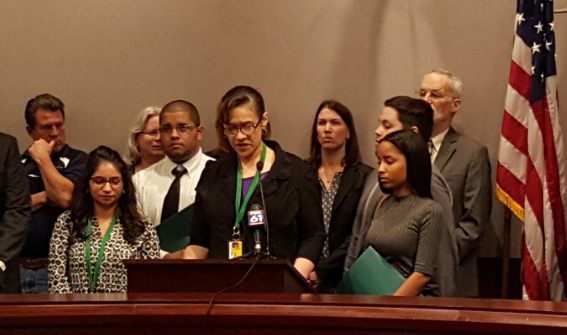 Photo: Connecticut Energy Efficiency Workers at the State Capital speaking on the positive impacts of energy efficiency on low income, middle class households, and health outcomes in our state. Jan. 2018
Photo: Connecticut Energy Efficiency Workers at the State Capital speaking on the positive impacts of energy efficiency on low income, middle class households, and health outcomes in our state. Jan. 2018
 Photo: Leticia Colon de Mejias, Chair, Efficiency For All, Advocating for clean energy law in Washington, DC
Photo: Leticia Colon de Mejias, Chair, Efficiency For All, Advocating for clean energy law in Washington, DC


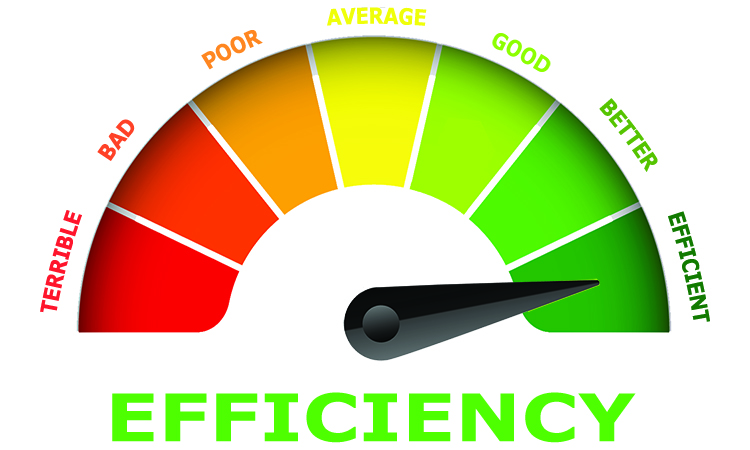
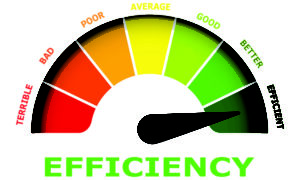 Energy efficiency has the advantage of reducing all types of power plant-related emissions simultaneously by avoiding the need to generate electricity in the first place. Therefore, energy efficiency programs can improve air quality by reducing emissions. Whenever households and businesses reduce electricity consumption, somewhere on the grid one or more generators reduce their electric output (all else being equal). Typically, the avoided generation is from higher marginal-cost, fossil fuel-fired power plants, which, depending on the region, can be higher emitting power plants. Thus, avoiding generation from these units is desirable to reduce air pollutant emissions.
Energy efficiency has the advantage of reducing all types of power plant-related emissions simultaneously by avoiding the need to generate electricity in the first place. Therefore, energy efficiency programs can improve air quality by reducing emissions. Whenever households and businesses reduce electricity consumption, somewhere on the grid one or more generators reduce their electric output (all else being equal). Typically, the avoided generation is from higher marginal-cost, fossil fuel-fired power plants, which, depending on the region, can be higher emitting power plants. Thus, avoiding generation from these units is desirable to reduce air pollutant emissions. 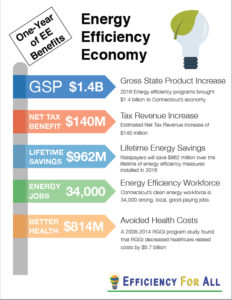

 Photo: Leticia Colon de Mejias, Chair, Efficiency For All, Advocating for clean energy law in Washington, DC
Photo: Leticia Colon de Mejias, Chair, Efficiency For All, Advocating for clean energy law in Washington, DC 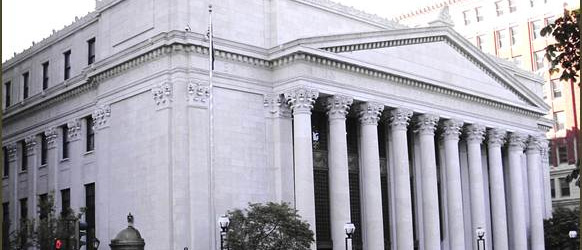
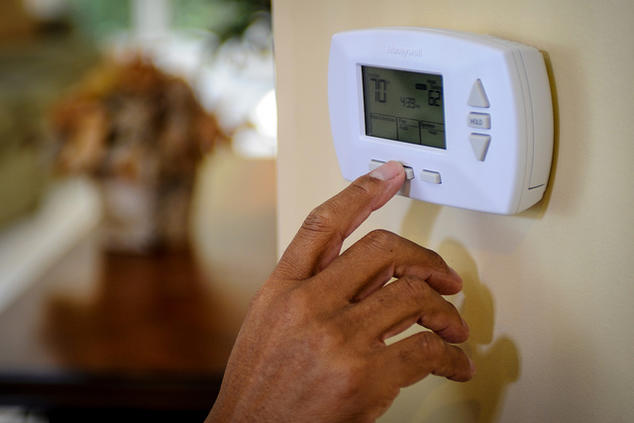

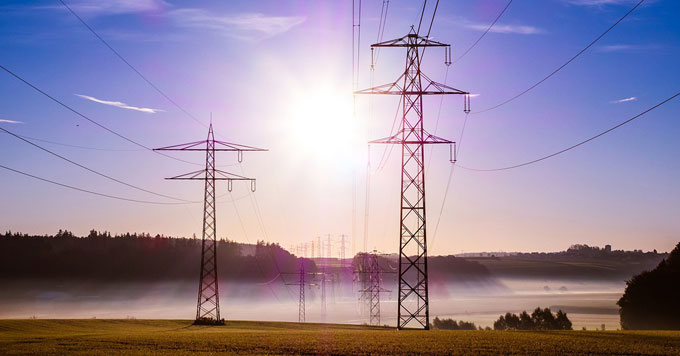



 Last week, two EFA members were awarded for their efforts to protect the ratepayer funds and the local energy efficiency programs & services.
Last week, two EFA members were awarded for their efforts to protect the ratepayer funds and the local energy efficiency programs & services.




